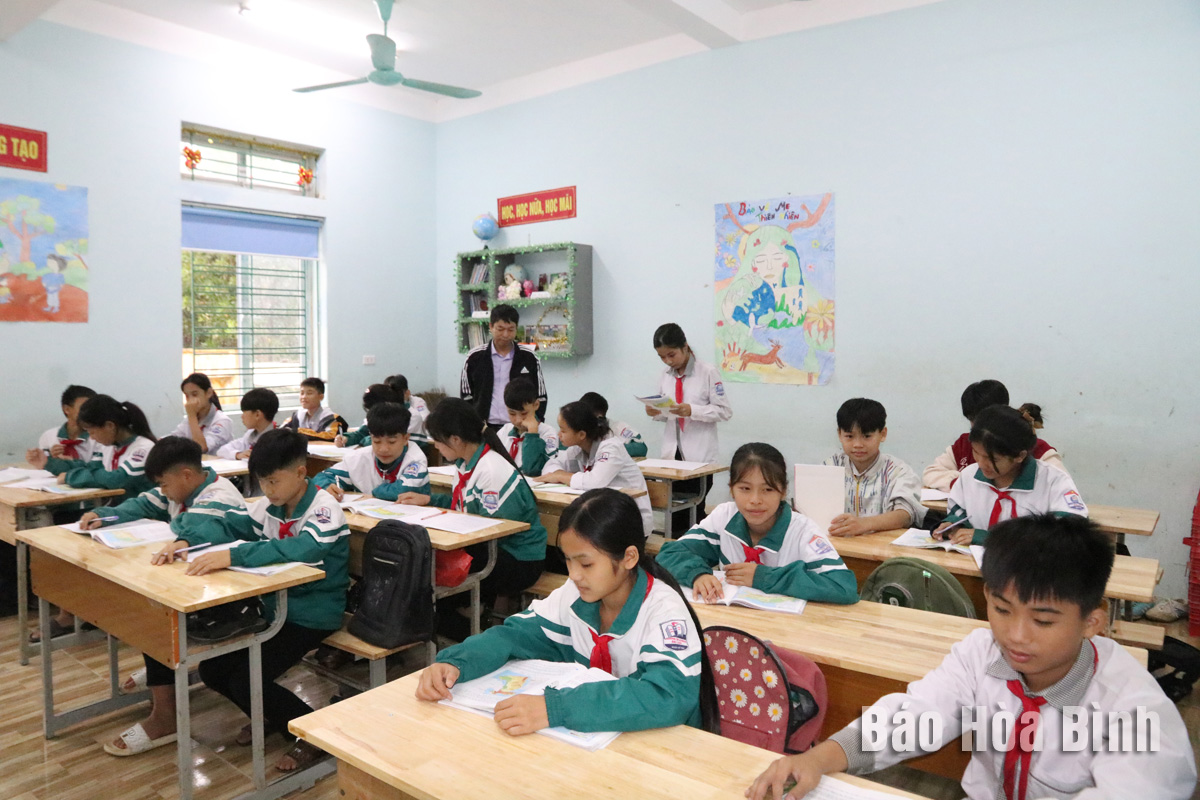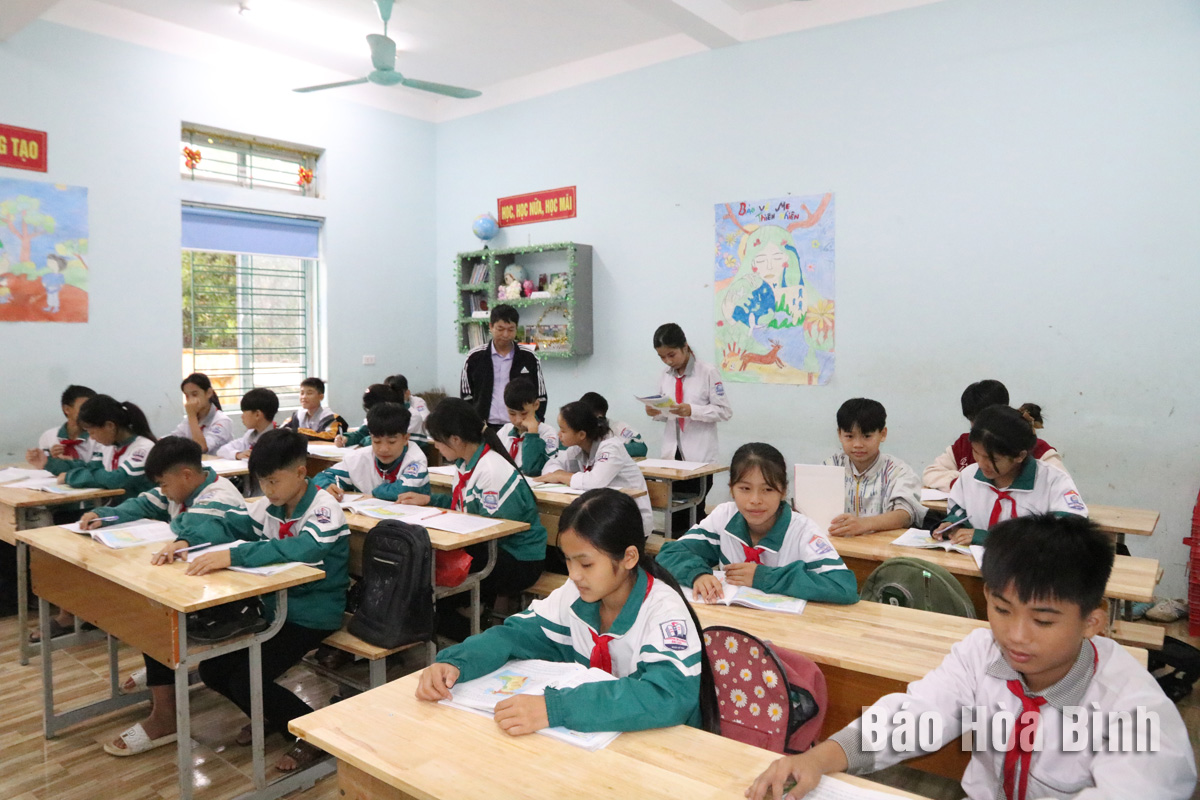
Hoa Binh has determined the education and training development as the province’s top priority in order to meet innovation requirements.
Teacher and students at An Lac Secondary and High School, Thong Nhat commune, Lac Thuy district, Hoa Binh province.
More than 99% of the local students passed the high school graduation in the 2023 school year. The result showed a positive change in the quality of high school education of the province.
In the national competition for excellent high-school students in the 2022-2023 academic year, the local students got 28 prizes, five higher than the previous exam. Particularly, some schools won high prizes in international competitions.
According to statistics, the quality of education in the province increased by 29 places in the past three years, ranking in the middle-group of the country. The province has 305 out of the 516 preschools and high schools meeting national standards. The construction and supplementation of facilities continue to receive attention. The province has obtained universal preschool education for children aged 5, Level 2 of illiteracy eradication, and Level 3 of primary education universalisation, among others.
Hoa Binh’s policies for education and training development are increasingly improved. As a result, school facilities, teaching equipment, and information technology infrastructure have been invested in the direction of consolidation, standardisation and modernisation.
In the time ahead, the province will review, plan, and arrange the network of educational institutions, reduce separated schools and classes, develop non-public educational institutions, strengthen the boarding and semi-boarding general education school system while preparing adequate teaching facilities and equipment to meet innovation requirements.
The province strives to achieve 82% of the schools will have enough classrooms, subject classrooms and teaching equipment, 61% of the preschools and high schools meeting national standards by 2025.
The emulation movement "Hoa Binh joining hands to build new-style rural areas” has been widely spreading, becoming a driving force that motivates the localities to renew rural landscapes and improve the material and spiritual lives of the residents. In this movement, the people play a central role-both as the main implementers and direct beneficiaries of its outcomes.
In response to the global digital revolution, Hoa Binh Newspaper is transforming itself into a modern and multi-platform media hub, blending cutting-edge technology with a restructured newsroom and a new generation of tech-savvy journalists.
Hoa Binh province’s Association of the Elderly recently held a conference to review the project on expanding the inter-generation self-help club model until 2025.
In a move to implement Resolution No. 57-NQ/TW, issued on December 22, 2024 by the Politburo, which targets breakthroughs in science-technology development, innovation, and digital transformation, the Hoa Binh provincial Department of Health has issued a plan to roll out the "Digital Literacy for All” campaign within the local health sector.
An Nghia Commune (Lạc Sơn District) is one of the communes that achieved the tha standard of the national new rural area in 2018. Entering a new development phase, the commune is now trying to meet the criteria for the advanced new rural development. With the strong political will and the public consensus, the commune is gradually overcoming the challenges to reach this goal, aiming for the sustainable development.



